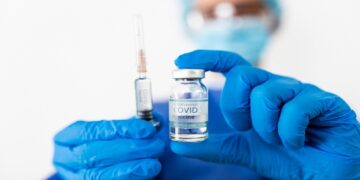Merck announced results from two Phase 3 studies evaluating MK-1293, Merck’s investigational, follow-on biologic* insulin glargine candidate for the treatment of people with type 1 and type 2 diabetes.
In both studies, MK-1293 achieved its primary endpoint by demonstrating non-inferiority in change from baseline A1C (a measure of average blood glucose) and similar safety to Lantus® (insulin glargine)** after 24 weeks in patients with type 1 and type 2 diabetes. Furthermore, in both studies, MK-1293 met its pre-specified secondary efficacy endpoints of statistical A1C equivalence to Lantus, a measure used to show that an investigational treatment is similar, within an acceptable range, to a current therapy.
“It is encouraging to see that the investigational agent MK-1293 met its primary and secondary endpoints,” said Philip Home, D.M., D.Phil, professor of diabetes medicine, Newcastle University, United Kingdom. “These data, together with other clinical studies of its time-action profile, suggest that Merck’s insulin glargine, if approved, could help provide glycemic control in appropriate patients with type 1 and type 2 diabetes.”
MK-1293 has the same amino acid sequence as Lantus, the originator insulin glargine. The development of MK-1293 builds on an agreement between Merck and Samsung Bioepis established in February 2013 to develop and commercialize multiple biosimilar candidates across different therapeutic areas. Under the terms of a subsequent 2014 agreement, Merck is responsible for the clinical development, manufacturing and, if approved, commercialization of MK-1293. Samsung Bioepis is partially funding its development.
“The investigational agent MK-1293 represents Merck’s entry into insulin therapeutics and into treatments that may be useful for patients with type 1 diabetes, and we are pleased with these Phase 3 results,” said Peter Stein, M.D., vice president, late stage development, diabetes and endocrinology, Merck. “As a follow-on biologic, MK-1293 has the potential to offer a treatment option for pediatric and adult patients with type 1 diabetes and for adults with type 2 diabetes who use basal insulin to help control their glucose levels.”
MK-1293 in Patients with Type 1 Diabetes (296-OR)
The Phase 3, randomized, active-controlled, open-label trial assessed the efficacy and safety of MK-1293 (n= 245) compared with Lantus (n=263) in patients with type 1 diabetes. The primary efficacy endpoint was non-inferiority of change from baseline A1C at week 24. At baseline, patients had an A1C level equal to or less than 11.0 percent and were taking basal and prandial insulin.
The primary endpoint of the study was met, demonstrating the non-inferiority of MK-1293 to Lantus in patients with type 1 diabetes. The least-squares mean difference in A1C (MK-1293 minus Lantus) was 0.04 percent (95% CI: -0.11, 0.19), meeting A1C non-inferiority (upper bound of the confidence interval <0.4%) and equivalence (confidence interval within -0.4% and 0.4%) criteria. Basal insulin doses were similar between groups (MK-1293 minus Lantus; difference of -0.7 U/day; 95% CI -2.5, 1.0 U/day).
MK-1293 in Patients with Type 2 Diabetes (926-P)
The Phase 3, randomized, active-controlled, open-label trial assessed the efficacy and safety of MK-1293 (n=265) compared to Lantus (n=266) in patients with type 2 diabetes inadequately controlled on diet and exercise alone. The primary efficacy endpoint was non-inferiority of change from baseline A1C at week 24. At baseline, patients had an A1C level equal to or less than 11.0 percent and were eligible for or were taking basal insulin greater than or equal to 10 U/day.
MK-1293 met the study’s primary endpoint, demonstrating non-inferiority to Lantus with a least-squares mean difference in A1C (MK-1293 minus Lantus) of 0.03 percent (95% CI: -0.12, 0.18), meeting A1C non-inferiority (upper bound of the confidence interval <0.4%) and equivalence (confidence interval within -0.4% and 0.4%) criteria. Basal insulin doses were similar between groups (MK-1293 minus Lantus; difference of 1.4 U/day; 95% CI -2.2, 4.9 U/day).
The primary safety objective was anti-insulin antibody (AIA) development. Similar AIA, including incidence and titers, and similar neutralizing antibody responses were seen between treatment groups. In the study, 29.0 percent of patients receiving Lantus and 34.7 percent being treated with MK-1293, irrespective of AIA status at baseline, had an AIA positive at or before week 24. Additionally, 14.9 percent of patients receiving Lantus and 19.3 percent of patients receiving MK-1293 who were negative of AIA at baseline had an AIA positive at or before week 24.
About Merck
For 125 years, Merck has been a global health care leader working to help the world be well. Merck is known as MSD outside the United States and Canada. Through our prescription medicines, vaccines, biologic therapies, and animal health products, we work with customers and operate in more than 140 countries to deliver innovative health solutions. We also demonstrate our commitment to increasing access to health care through far-reaching policies, programs and partnerships. For more information, visit www.merck.com
Contact:
Merck
Media:
Doris Li, 908-246-5701
Kristen Drake, 908-334-4688
or
Investor:
Justin Holko, 908-740-1879

















